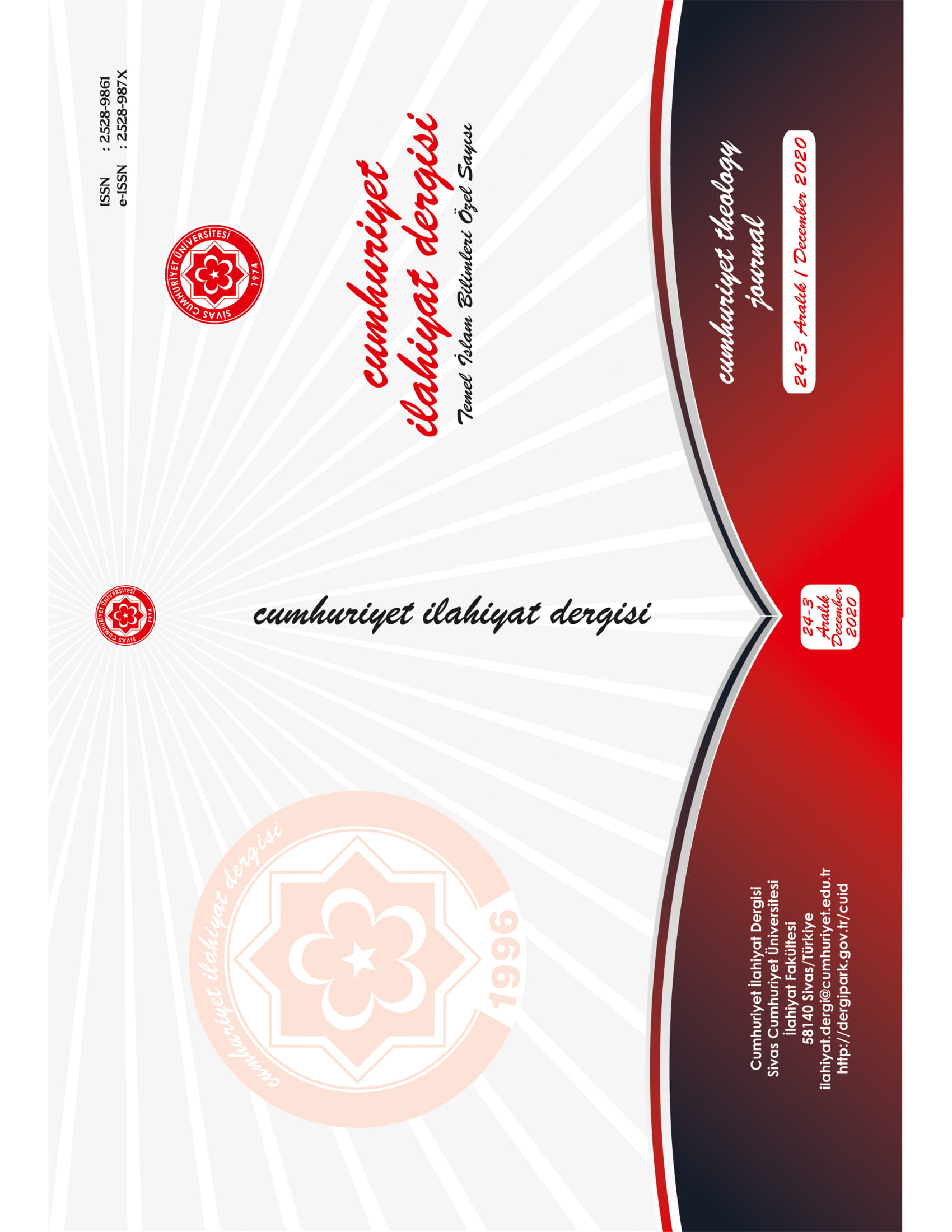Hadis Biliminin Endonezya’ya Girişi ve Gelişmesine Mahfûz et-Termesî ve Hâşim Eş’arî’nin Katkısı
The Ḥadīth Science Entry to Indonesia and the Contribution of Mahfudz Tremas and Hasyim Asy’ari to Its Development
Author(s): Mohammad AmiruddinSubject(s): Theology and Religion, Islam studies
Published by: Cumhuriyet Üniversitesi İlahyat Fakültesi
Keywords: Ḥadīth; Indonesia; Mahfudz Tremas; Hasyim Asy’ari; Islam;
Summary/Abstract: Although Indonesia is far from where Islam emerged, it is a country with the world’s largest Muslim population. The historical data on Islam’s entry into Indonesia is still very limited, therefore it is not easy to find clear information about it. This met with the historical reconstruction difficulty to the Islamic sciences’ development, especially ḥadīth, when Islam first came to Indonesia. Ḥadīth is not as popular as other sciences such as tafsīr, fiqh, taṣawwuf, and kalām. The ḥadīth’s arrival and the history of prevelance in Indonesia were not as clear as the others sciences. To solve this problem, the Indonesian historians traced the dates when Islamic sciences began to emerge and spread in Indonesia. These also provided clues about ḥadīth science’s emergence and development in Indonesia. Based on tracing early ḥadīth studies in Indonesia, we can speak about two important figures’ names who are widely mentioned and cannot be separated from ḥadīth science history in Indonesia; Mahfudz Tremas (d. 1338/1920) and Hasyim Asy’ari (d. 1366/1947). These two figures colored Islamic teaching in Indonesia because of their mastery Islamic knowledge covering various Islamic sciences. Both of them also had an important role in Indonesian society in the colonialism era. This made it easier for them to spread ḥadīth widely among Indonesian Muslim people. In this research article, data, reports, and information of ḥadīth science emergence in Indonesia, Mahfudz Tremas and Hasyim Asy’ari’s biographies, studies, and contributions were compiled with descriptive analysis method and historical approach. Furthermore, data collection and evaluation methods were used in this research article. This research cites references written in Indonesian, Turkish, Arabic, and other foreign languages. The journal articles and scientific books we used are among the sources used in this study. The early Indonesian scholars are generally experts not only in one of the Islamic sciences but also in others. Moreover, Islamic sciences that they desired, deepened in, and focused on were mixed. The early Indonesian scholars not only wrote several on Islamic science fields, but they also interconnected the early Islamic sciences’ works in Indonesia. Therefore, it can be considered a difficult task to distinguish ḥadīth from others. The subject, we examine here is within the ḥadīth science’s historical framework mixed with other Islamic sciences in Indonesia. This research article focused only on ḥadīth entry history in Indonesia, Mahfudz Tremas, Hasyim Asy’ari, and their role in ḥadīth development. The questions we answered in this article are when ḥadīth science began to emerge, what was and how the role of Mahfudz Tremas and Hasyim Asy’ari were in Indonesia at this subject as the greatest contributors to its early emergence and dissemination, and high authority scholars among Indonesian Muslim society. Our aim in this research is to study, understand, and explain the early ḥadīth science’s history in Indonesia. Mahfudz Tremas and Hasyim Asy’ari, who are Indonesian ḥadīth scholars teaching ḥadīth for Indonesian people, attaching great importance to ḥadīth, making a great contribution, and having the most influence, are discussed. Understanding and explaining ḥadīth studies in Indonesia would be easier by getting to know these two scholars. Apart from these two scholars, it should not be assumed that there was no ḥadīth scholar in Indonesia in the early period. Here, we aim to understand the most influential scholars’ service and contribution in the ḥadīth field. It is important to introduce Indonesian hadith scholars, their works, and contributions to scholars and scientists in Turkey and the world, and then to contribute to the academic and scientific relations among the countries. This research article, as one of the first Turkish sources on ḥadīth’s growth and development in Indonesia, would be useful for ḥadīth academicians in Turkey. Since the research title on the ḥadīth science emergence history in Indonesia, and Mahfudz Tremas and Hasyim Asy’ari’s contribution to its development, as we know, has never been done before. This research article will help to built a network between the Indonesian and Turkish peoples, scholars, and academicians. It also contributes to increasing the scientific benefits of the two sides of academic circles. Through this research, contemporary ḥadīth studies in Indonesia can be traced from the time it emerged and the early development process. Moreover, It is a great contribution to specify the early ḥadīth science history in Indonesia, as the world’s largest Muslim country.
Journal: Cumhuriyet İlahiyat Dergisi
- Issue Year: 24/2020
- Issue No: 3
- Page Range: 1333-1354
- Page Count: 22
- Language: Turkish

